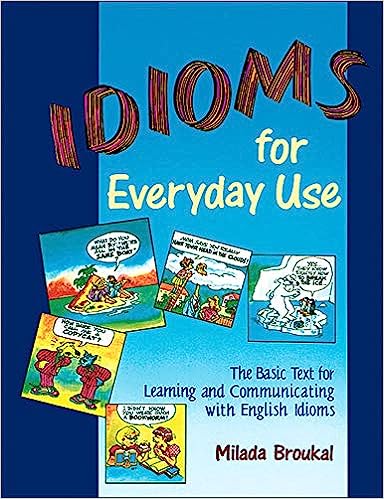How to improve English speaking in 10 steps. Here are some key attributes of a secret recipe to improving Spoken English
How to improve English speaking in 10 steps

How to improve English speaking in 10 steps

Practice with native speakers as often as possible

Improving Spoken English is all about practice.
It is impossible to be really fluent in English without practicing with native speakers
Lot of ESL students expect to learn grammar and simply be able to speak fluently. While comprehending grammar may be simple, understanding how to use it and how to use it appropriately and quickly in real conversations is the most difficult challenge for many English learners. Immersion is the best way to learn English and if you can practice more with native speakers you will become fluent faster.

Learning to speak English is about understanding the flow of the language

You can’t learn to speak English the same way you learn History or Biology
There are a lot of elements in the English language that makes it function but also make it difficult to learn
English speakers need to get an intuitive feel how these components sync with each other. Things such as prepositions, figures of speech, and slang, are impossible to master by just memorizing theory. This is where learning to speak English becomes different from learning Biology or History. Theory becomes useless unless you have an intuitive understanding of the application. Practice is the key to improving Spoken English.

How to improve English speaking in 10 steps
Don’t start with grammar

If you goal is to be really fluent in English, don’t start with grammar
Unless if you goal is solely to pass an exam such as TOEFL or IELTS and if you only have very limited time, then it makes sense to just cram grammar rules as part of exam preparation.
When you start learning a language you are setting yourself up for failure. If you try to process all the grammar rules in your head and try to speak, you will not speak much! English grammar has so many of inconsistencies in its rules. For example, the possessive of “John” is “John’s” but the possessive of “it” is “its,” not “it’s,” which is a contraction of “it is.” You can’t simple memorize and apply all the grammar rules in English.
A better approach is to start speaking first and then improve grammar along the way. Think about it. This is the same way you learned your first language.

How to improve English speaking in 10 steps
Pronunciation is about practice

Proper pronunciation allows you to be understood well
Both pronunciation and enunciation are very important aspects of learning English
Lot of times, pronunciation, enunciation and tempo will improve once you start speaking English with native speakers. Your brain will adjust to the pace and tempo they speak. Your ears will adjust to the way they stress certain sounds.
If you want to practice this topic, Check the Resources Below

How to improve English speaking in 10 steps
Make learning English a habit

You have to make learning English a daily habit
If you want to improve from a beginner level to an advanced level in English
Just like you go to the gym, create a learning environment where you improve different aspects of English daily. Watch movies in the English language, learn recipes in English, listen to English music, watch TED videos, listen to audio books, listen to podcasts, attend a club or church service in the language you are learning etc. The more your mind gets used to using English, the easier it becomes to communicate in English.
Like all habits, improving English becomes a process that gets easier once you start becoming more and more confident. So make sure you start speaking without been shy or embarrassed – you will be surprised how fast you can improve.

How to improve English speaking in 10 steps
Idioms make you sound like a Native Speaker

There are many different idioms that have developed in the English language, especially in North America, over time
Learn the idioms to help you become fluent and talk English like native!
Idioms are phrases or sayings with meanings that are different than what is actually being said. In other words, they should not be taken literally. For example, if someone is “in the same boat” as someone else, it means they are in the same situation. They are not actually in a boat together.
If you want to practice this topic, Check the Resources Below

Learn business-related slang

English is filled with different idioms, sayings, and expressions
Business English has it’s own common idioms that may not make sense to someone who isn’t a native English speaker
Learn business-related, English and American idioms to help you communicate at your job or improve your comprehension of the English language. After you learn some Business English idioms, you should practice using them.
If you want to practice this topic, Check the Resources Below

How to improve English speaking in 10 steps
Improve Pronunciation with Tongue Twisters

Learning the correct pronunciation of the English language is very important
Tongue twisters help us learn to pronounce letter and consonant sounds.
By practising tongue twisters your spoken language improves very quickly.
Children and adults love saying tongue twisters. Start by saying each tongue twister slowly and then repeat again and again trying to say each word as clearly as possible as quickly as possible. Tongue twisters produce many laughs and are a great way of learning to speak English with friends. Tongue twisters are great practice whether you are a beginner and start with simple tongue twisters and then moving on to more difficult tongue twisters as your English pronunciation improves.
If you want to practice this topic, Check the Resources Below

How to improve English speaking in 10 steps
Speak more naturally using Phrasal Verbs

There are many Phrasal Verbs in the English language
Try learning a few every week
The definition of a phrasal verb is a phrase, which is made up of a verb and either a preposition and/or an adverb.
There are many phrasal verbs in the English language and they are often used on a daily basis. The verb in phrasal verbs will change according to whether it is being used in the present, past or continuous tenses but the meanings of these Phrasal Verbs always stay the same. When you learn a new phrasal verb, write them down with their meanings and then refer back (look back) at them to ensure you remember them and understand their meanings.
If you want to practice this topic, Check the Resources Below

How to improve English speaking in 10 steps
Practice with a native English teacher

Find a native English Speaker
If your goal is to improve English fluency and become and advanced English speaker we recommend practicing with a Native English teacher
That is the best way to learn perfect grammar naturally and get a native-sounding accent.

Here are other tips on learning a language with native speakers






























